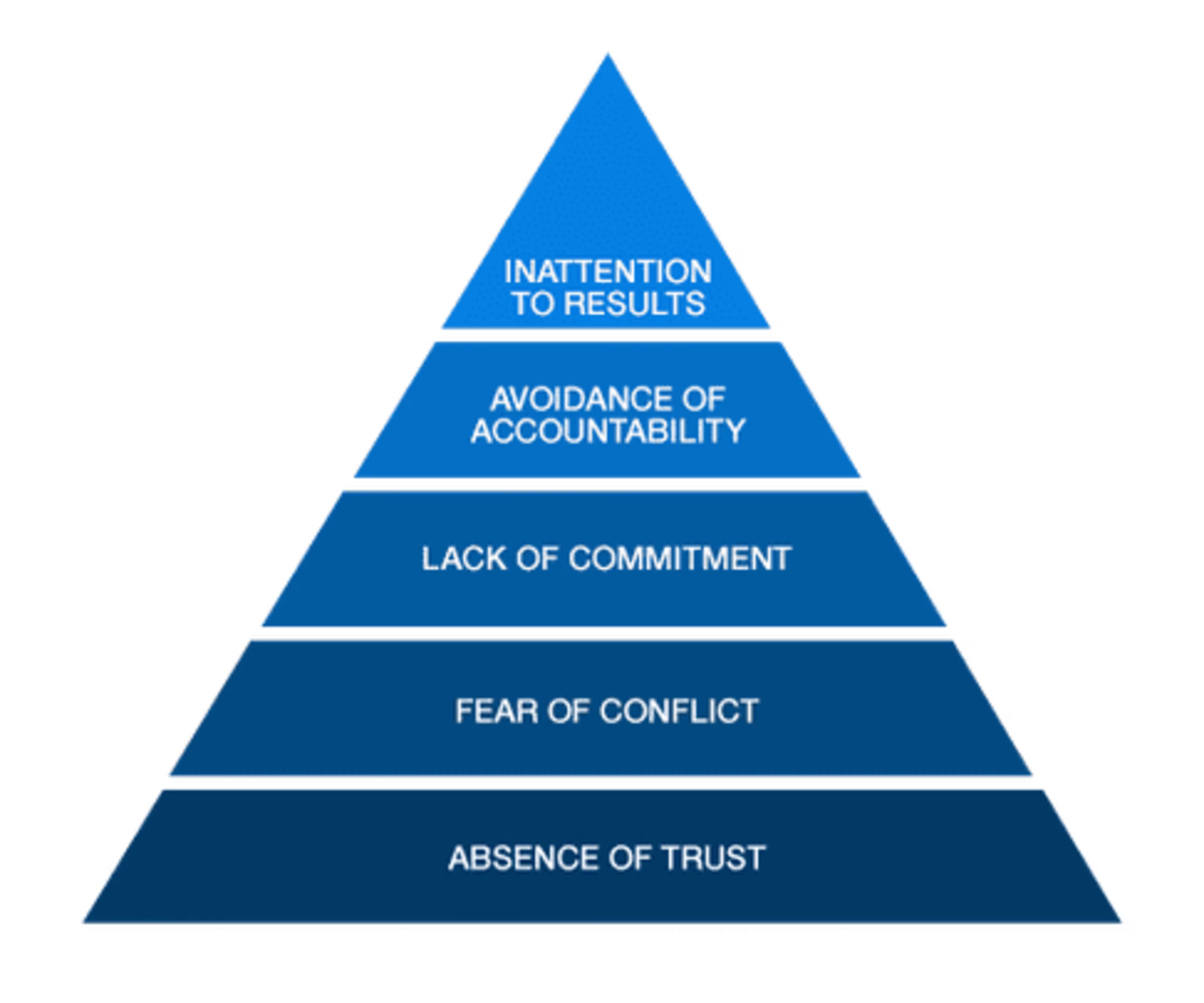Building a strong team requires several key pieces and a lot of work. But there is a single piece that is needed to take a strong team and transform it into an exceptional, high-performance team: accountability.

“Accountability” has become one of those overused words that is often misunderstood, or, more accurately, not completely understood. Many people equate it to punishing people or tattling on someone. It’s used to tear down rather than build up.
Accountability is versatile and has the ability to build up a relationship, team, or company. Like fuel, it ignites. It propels when executed properly. But like most accelerants, it can also be very dangerous. The higher quality octane it is, the cleaner, faster, and better the engine (team) will run.
My last post covered ‘true commitment’ and more of Patrick Lencioni’s ‘The Five Dysfunctions of a Team’. This post will cover the last two dysfunctions: Avoidance of Accountability and Inattention to Results.

Avoidance of Accountability
Lencioni’s fourth dysfunction is an Avoidance of Accountability. The avoidance is a “fear”, similar to dysfunction number two (Fear of Conflict), which prevents teams from engaging in honest dialog. It’s a fear of having uncomfortable conversations, possibly straining relationships, and/or looking like a “jerk”. This fear causes us to put our personal discomfort above the good of the team and prevents us from holding each other accountable.
“Avoidance of Accountability - Teams that commit to decisions and standards of performance do not hesitate to hold one another accountable for adhering to those decisions and standards. What is more, they don’t rely on the team leader as the primary source of accountability, they go directly to their peers.” – Patrick Lencioni
Holding each other is difficult, but the cost of not doing so is incredibly high. An avoidance of accountability leads to:
The unintentional lowering of standards and acceptance of mediocrity
Reduced performance, missed deadlines, and wasted time/effort
Ironically, strained relationships and discomfort amongst team members
The good news is, if you’ve been building your team with a foundation of vulnerability-based trust and have achieved ‘true commitment’, holding each other accountable is accepted, even desired because it leads to greater growth and success.
Essentially, holding each other accountable is called “feedback.” The best resource I’ve found on how to effectively give feedback is from a company called Manager-Tools. They have numerous podcasts (start with this one – Starter Feedback Model) that can help you better understand the importance of feedback, and most importantly, how to give it.
The key to feedback? Focus on the specific behaviors rather than the person.
You can have a strong team that trusts each other and commits to goals, but without holding each other accountable, it’s likely that your “strong team” will slowly plod along, being left in the dust by teams that push and hold each other accountable.
Once the team is able to hold each other accountable, there is a natural shift to focusing on team goals and results. Accountability addresses the fifth dysfunction, an Inattention to Results.
Inattention to Results
“Inattention to Results - Teams that trust one another, engage in conflict, commit to decisions, and hold one another accountable are very likely to set aside their individual needs and agendas and focus almost exclusively on what is best for the team. They do not give in to the temptation to place their departments, career aspirations, or ego-driven status ahead of the collective results that define team success.” – Patrick Lencioni
I’ll admit that I struggle with this one as a “dysfunction.” As Lencioni states, if you’ve tackled the other four dysfunctions, it’s likely that this won’t be an issue. At least that’s been my experience. But it’s always good to keep it in mind and double-check to make sure it hasn’t snuck in there.
There are a couple things related to results that we use with our teams:
Make sure your team is holding each other accountable for results – don’t confuse activity with results
Align individual goals and results with the greater team goals – there’s nothing wrong with wanting to achieve personally, so long as it’s not at the expense of the team
If you aren’t already doing so, implement some type of measurement system – OKRs, KPIs, performance metrics, etc… Have something that you measure consistently and easily.
I really like Bill Walsh’s book, ‘The Score Takes Care of Itself’. Aside from being a really interesting read for football fans, it has a lot of great thoughts/advice in it related to results. Definitely check it out.
In the end, it’s the results that matter. Building a strong team and overcoming Lencioni’s five dysfunctions gives you the best chance to achieve stellar results. You have the resources, you have the road map, now you have to do the hard work of building the team.
If you’re interested in measuring your team against Lencioni’s pyramid, check out the Team Assessment that can be found in the book (or online, for a fee). It’s a great, quick tool that can be used to gauge the strength of your team.
If you take it, or have stories to share about your ‘Strong Team’, I’d love to hear them. Let us know what you’re doing to build your team.